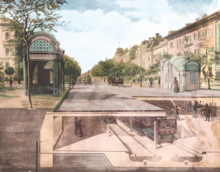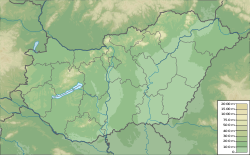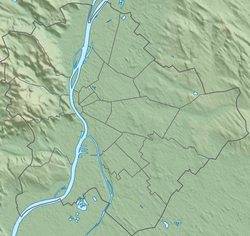Budapest Metro
You can help expand this article with text translated from the corresponding article in Hungarian. (February 2023) Click [show] for important translation instructions.
|
This article needs additional citations for verification. (February 2023) |
| Budapest Metro | |||||||||||||||||||||||||||||||||||||||||||||||||||||||||||||||||||||||||||||||||||||||||||||||||||||||||||||||||||||||||||||||||||||||||||||||||||||||||||||||||||||||||||||||||||||||||||||||||||||||||||||||||||||||||||||||||||||||||||||||||||||||||||
|---|---|---|---|---|---|---|---|---|---|---|---|---|---|---|---|---|---|---|---|---|---|---|---|---|---|---|---|---|---|---|---|---|---|---|---|---|---|---|---|---|---|---|---|---|---|---|---|---|---|---|---|---|---|---|---|---|---|---|---|---|---|---|---|---|---|---|---|---|---|---|---|---|---|---|---|---|---|---|---|---|---|---|---|---|---|---|---|---|---|---|---|---|---|---|---|---|---|---|---|---|---|---|---|---|---|---|---|---|---|---|---|---|---|---|---|---|---|---|---|---|---|---|---|---|---|---|---|---|---|---|---|---|---|---|---|---|---|---|---|---|---|---|---|---|---|---|---|---|---|---|---|---|---|---|---|---|---|---|---|---|---|---|---|---|---|---|---|---|---|---|---|---|---|---|---|---|---|---|---|---|---|---|---|---|---|---|---|---|---|---|---|---|---|---|---|---|---|---|---|---|---|---|---|---|---|---|---|---|---|---|---|---|---|---|---|---|---|---|---|---|---|---|---|---|---|---|---|---|---|---|---|---|---|---|---|---|---|---|---|---|---|---|---|---|---|---|---|---|---|---|---|
standard gauge) | |||||||||||||||||||||||||||||||||||||||||||||||||||||||||||||||||||||||||||||||||||||||||||||||||||||||||||||||||||||||||||||||||||||||||||||||||||||||||||||||||||||||||||||||||||||||||||||||||||||||||||||||||||||||||||||||||||||||||||||||||||||||||||
| Top speed | 80 km/h (50 mph)[3] | ||||||||||||||||||||||||||||||||||||||||||||||||||||||||||||||||||||||||||||||||||||||||||||||||||||||||||||||||||||||||||||||||||||||||||||||||||||||||||||||||||||||||||||||||||||||||||||||||||||||||||||||||||||||||||||||||||||||||||||||||||||||||||
| |||||||||||||||||||||||||||||||||||||||||||||||||||||||||||||||||||||||||||||||||||||||||||||||||||||||||||||||||||||||||||||||||||||||||||||||||||||||||||||||||||||||||||||||||||||||||||||||||||||||||||||||||||||||||||||||||||||||||||||||||||||||||||
The Budapest Metro (Hungarian: Budapesti metró) is the rapid transit system in the Hungarian capital Budapest. Opened in 1896, it is the world's second oldest electrified underground railway after the City and South London Railway of 1890, now a part of London Underground, and the third oldest underground railway with multiple stations, after the originally steam-powered Metropolitan Railway, now a part of London Underground (1863), and the Mersey Railway, now part of Merseyrail in Liverpool (1886).[4]
Budapest's first line,
History


Andrássy Avenue and the Underground | |
|---|---|
| Location | Budapest, Hungary |
| Part of | Budapest, including the Banks of the Danube, the Buda Castle Quarter and Andrássy Avenue |
| Criteria | Cultural: (ii), (iv) |
| Reference | 400bis-002 |
| Inscription | 1987 (11th Session) |
| Extensions | 2002 |
| Area | 57.85 ha (0.2234 sq mi) |
| Buffer zone | 239.61 ha (0.9251 sq mi) |
| Website | https://www.bkv.hu/ |
| Coordinates | 47°29′19″N 19°5′13″E / 47.48861°N 19.08694°E |
To clarify where the first "metro" in continental Europe was built, a few distinctions must be made. While the
The
Works on line M2 started in the 1950s, although the first section did not open until 1970. It follows an east–west route, connecting the major
Planning for Metro Line 3 began in 1963 and construction started in 1970 with help of
Construction of the fourth Metro line began in 2006.[16] The line opened after several delays and budget overruns in May 2014.[17]
Routes
The metro consists of four lines (M1–M4), each denoted by a different colour. M1 (yellow) runs from Mexikói út south-west towards the river. The M2 (red) line travels east–west through the city, crossing the Danube. The M3 (blue) runs in a broadly north–south alignment, interchanging with the three other lines. The M4 (green) line commences at Keleti pályaudvar and travels south-west, crossing the river, to terminate at Kelenföld vasútállomás.[12]
| Line | Color | Name and Route |
Year of opening |
Latest extension |
Length (km) |
Number of stations |
|---|---|---|---|---|---|---|
| Yellow | Line M1
(Vörösmarty tér ↔ Mexikói út)[18] |
1896 | 1973 | 4.4 | 11 | |
| Red | Line M2
(Déli pályaudvar ↔ Örs vezér tere)[19] |
1970 | 1972 | 10.3 | 11 | |
| Blue | Line M3
(Újpest-Központ ↔ Kőbánya-Kispest)[20] |
1976 | 1990 | 17.3 | 20 | |
| Green | Line M4
(Keleti pályaudvar ↔ Kelenföld vasútállomás)[21] |
2014 | - | 7.3 | 10 | |
| Total: | 39.4 | 52 | ||||
Metro line M1

Metro line M2

Metro line M3
Metro line M4

Future expansion
Metro line M5
Metro line
Rolling stock
-
Ganz MFAV – operating on line M1 since 1973
-
Alstom Metropolis – operating on line M2 since 2012 and on line M4 since its opening in 2014
-
Metrowagonmash 81-717.2K/714.2K – refurbished versions of the old carriages that ran on lines M2 and M3; operating on line M3 since 2017
General information
Tickets and transfer system
The usual BKK tickets and passes can be used on all lines. Single tickets can be re-used when changing metro lines.[32]
There are plans for an
Citizens of the European Union, European Economic Area and Switzerland 65 years and older can ride the metro (and other local transport) for free.[36]
In popular culture
The internationally acclaimed 2003 Hungarian thriller Kontroll is set and was filmed in the metro system on the line M3.[14]
Network map
See also
- List of metro systems
- List of automated urban metro subway systems
Notes
References
- ^ Mátyás Jangel (September 2010). "Közszolgáltatási szerződés, utasjogok, a szolgáltatástervezés és ellenőrzés folyamata a kötöttpályás helyi- és elővárosi közforgalmú közlekedésben" [Public service contract, passenger rights, service planning and monitoring process of local and suburban public transport rail] (in Hungarian). BKV Zrt. Közlekedési Igazgatóság [Directorate of Public Office. Transport]. pp. 10 (and 3). Archived from the original (pdf) on 2015-01-28. Retrieved 2015-04-19. Metro usage per day – Line 1: 120,000; Line 2: 405,000; Line 3: 630,000. (Line 4 began operations in 2014, with a 110,000 ridership estimated by Centre for Budapest Transport (BKK) based on the latest year.)
- ^ "Urban passenger traffic in Hungary and Budapest by mode of transport". Hungarian Central Statistical Office. 2021-08-18. Retrieved 2021-09-14.
- ^ "Siemens.com Budapest Line 4". Archived from the original on 18 December 2012. Retrieved 19 December 2022.
- ^ Jennifer Walker (19 December 2018). "Budapest M1: Inside continental Europe's oldest metro network". CNN. Retrieved 29 July 2019.
- ^ "World Heritage Committee Inscribes 9 New Sites on the World Heritage List". UNESCO World Heritage Centre. Archived from the original on November 28, 2009.
- ^ "Our thematic route with... - Sightseeing along the line of Millennium Underground Railway". BKV Zrt. Retrieved 2013-10-18.
- ^ Budapest's Electric Underground Railway Is Still Running After More Than 120 Years [1]
- ^ UNESCO World Heritage Centre. "UNESCO World Heritage Centre – World Heritage Committee Inscribes 9 New Sites on the World Heritage List". whc.unesco.org. Archived from the original on 28 November 2009. Retrieved 10 April 2013.
- ^ "The 10 Oldest Subways in the World". 12 December 2022.
- ^ "History of Tünel". 12 December 2022.
- ^ "Subway (Metro) definition". 12 December 2022.
- ^ a b c Robert Schwandl. "Budapest". UrbanRail.net. Retrieved 1 August 2019.
- ^ "First underground railway of Europe was opened in Budapest – Photo gallery". 7 May 2017.
- ^ a b Jennifer Walker. (19 December 2018). Budapest M1: Inside continental Europe's oldest metro network CNN. Retrieved 19 December 2022
- ^ Russia’s Metrovagonmash and the Budapest metro refurbishment — A curious arrangement
- ^ "Budapest's new bus service framework".
- ^ "Budapest opens controversial Metro Line 4".
- ^ Robert Schwandl. "Line M1 Vörösmarty tér - Mexikói út". UrbanRail. Retrieved 27 March 2019.
- ^ Robert Schwandl. "Line M2 Déli pályaudvar - Örs vezér tere". UrbanRail. Retrieved 27 March 2019.
- ^ Robert Schwandl. "Line 3 Újpest-Központ - Kõbánya-Kispest". UrbanRail. Retrieved 29 July 2019.
- ^ Robert Schwandl. "Line M4 Keleti pályaudvar- Kelenföld vasútállomás". UrbanRail. Retrieved 27 March 2019.
- ^ "M1-es metró korszerűsítése és meghosszabbítása - Budapesti Közlekedési Központ". Budapesti Közlekedési Központ (in Hungarian). Retrieved 1 October 2017.
- ^ "Alstom hands over first Budapest Metropolis train". 12 July 2012.
- ^ János Król. (17 November 2021). Interconnecting M2 metro and H8-H9 HÉV suburban lines Retrieved 8 December 2022
- ISBN 978-963-03-9124-5
- ^ "A 4 metróvonal összehasonlítása". Metro 4. Retrieved 19 December 2022.
- ^ "Budapest metro Line 3 reconstruction enters final phase". 9 November 2020.
- ^ "Megjelent az M3-as metróvonal rekonstrukciójának tervezésére kiírt pályázat". Budapesti Közlekedési Központ. 25 July 2013. Retrieved 1 June 2021.
- ^ "Three reconstructed stations opened on the central section of metro line M3".
- ^ "Automated metro Line M4 opens in Budapest". Railway Gazette. 28 March 2014. Retrieved 9 April 2015.
- ^ "Balázs Mór plan, long term service development plans of the BKK" (PDF). Retrieved 19 December 2022.
- ^ "Types and prices".
- ^ Már milliárdokért üzemeltetjük Budapesten az elektronikus jegyrendszert, holott még el sem készült 444. 12 March 2018. Retrieved 8 December 2022. (in Hungarian)
- ^ "Budapest signed the Contract Agreement for the Automated Fare Collection system". BKK Zrt. 8 October 2014. Retrieved 24 October 2014.
- ^ Hutter Marianna. (29 November 2018). Elektronikus jegyrendszer: felmondta a BKK a szállítói szerződést azonnalı. Retrieved 8 December 2022 (in Hungarian)
- ^ "BKK.hu".








